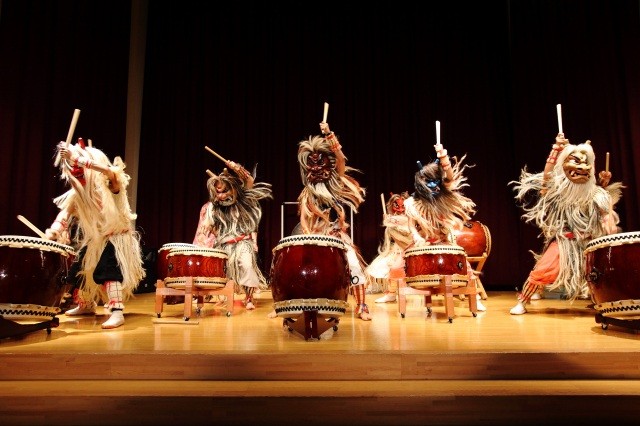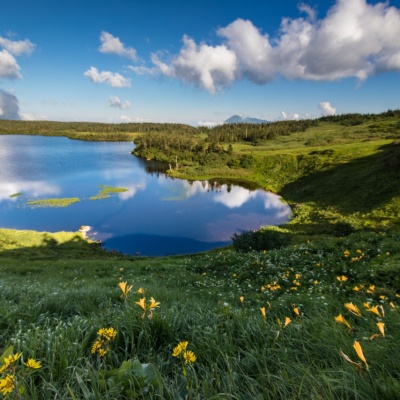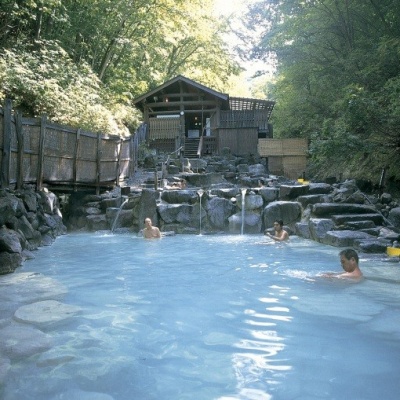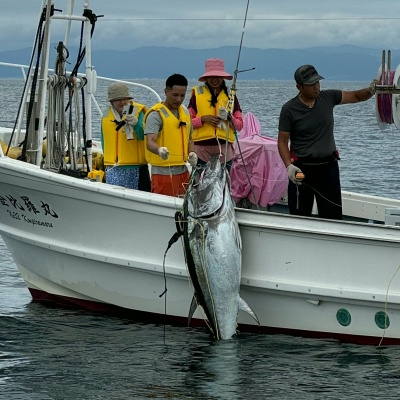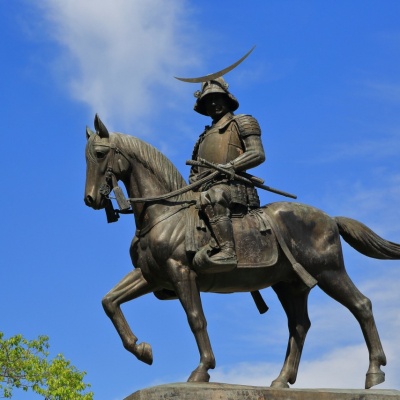Tour of Tohoku Spiritual Culture and Natural World Heritage Sites

- Suggested Time : 3 days / 2 nights
- Transport Options : Drive
Many nature-centric folk religions have spawned in the Tohoku region. This route offers a fascinating glimpse of the beliefs and customs that have endured here in different forms since ancient times, such as mountain worship and the Namahage, deities that make a ritual visit on New Year’s Eve.
(Aomori - Hirosaki - Shirakami - Ajigasawa - Shirakami - Oga - Akita - Dewa Sanzan - Yamagata)
START
Day1
Aomori Station, Aomori Airport
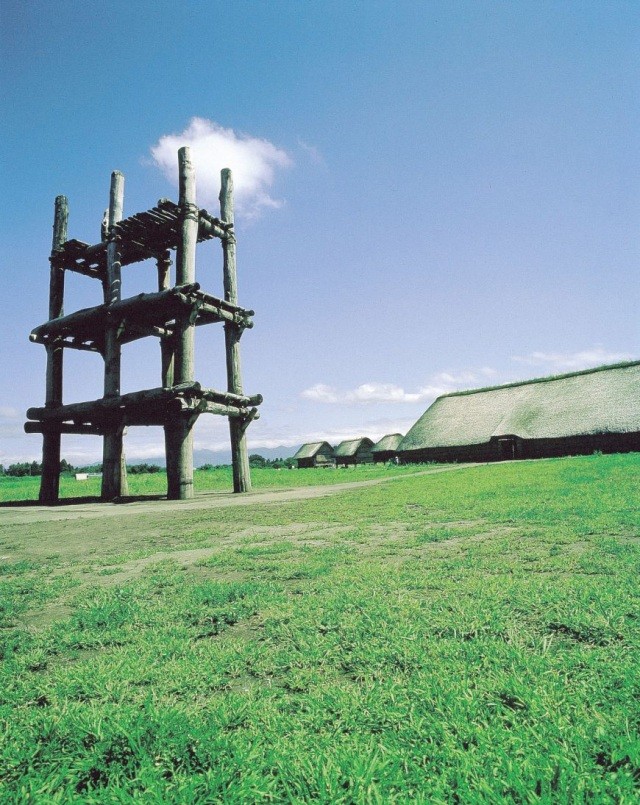
Experience the Jomon period in its entirety! You can wear the Jomon clothes on loan and walk freely in the ruins. Projection mapping will begin in the museum in April, 2008.
Nebuta House Wa Rasse
Nebuta Museum Wa Rasse
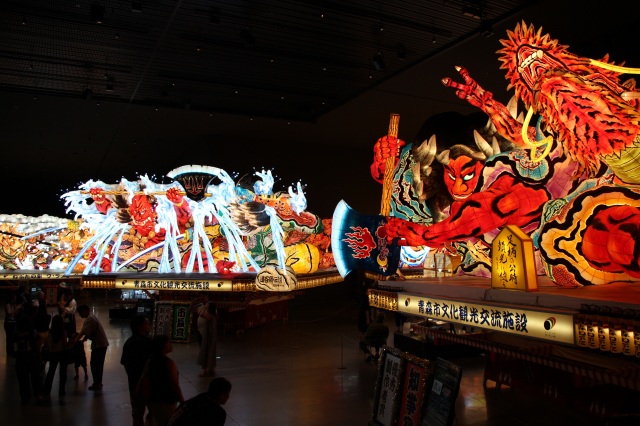
Four of the large Nebuta floats that have been used in the Nebuta Festival are on display. Aomori Nebuta Festival experience is available every day.
【Main Facilities】 Visitors can learn about the history of the Nebuta Festival and how it works. (1) Live Nebuta music performance and hands-on experience of the Nebuta Festival and its music 11:10, 13:10, 15:10, 17:10 (20 minutes each) (2) Nebuta Operation Showings: 9:30, 10:00, 10:30, 11:00, 11:30, 12:00, 12:30, 13:00, 13:30, 14:00, 14:30, 15:00, 15:30, 16:00, 16:30, 17:00, 17:30 (10 minutes each) (18:00 and 18:30 added from May to August) Hours of Operation Nebuta Museum May-August 9:00-19:00, September-April 9:00-18:00 (last admission 30 minutes before) Store May-August 9:00-19:30 September-April 9:00-18:30 Restaurant May-August Lunch time 11:00-15:00 (15:00-20:00) September-April 11:00-15:00 (15:00-19:00) *Reservations required for times in parentheses.
One hour free parking for Nebuta Museum Hall visitors Discounts for the disabled are available.
(Information as of September 25, 2024)
【Main Facilities】 Visitors can learn about the history of the Nebuta Festival and how it works. (1) Live Nebuta music performance and hands-on experience of the Nebuta Festival and its music 11:10, 13:10, 15:10, 17:10 (20 minutes each) (2) Nebuta Operation Showings: 9:30, 10:00, 10:30, 11:00, 11:30, 12:00, 12:30, 13:00, 13:30, 14:00, 14:30, 15:00, 15:30, 16:00, 16:30, 17:00, 17:30 (10 minutes each) (18:00 and 18:30 added from May to August) Hours of Operation Nebuta Museum May-August 9:00-19:00, September-April 9:00-18:00 (last admission 30 minutes before) Store May-August 9:00-19:30 September-April 9:00-18:30 Restaurant May-August Lunch time 11:00-15:00 (15:00-20:00) September-April 11:00-15:00 (15:00-19:00) *Reservations required for times in parentheses.
One hour free parking for Nebuta Museum Hall visitors Discounts for the disabled are available.
(Information as of September 25, 2024)
Hirosaki Park (Hirosaki Castle Ruins)
Enjoy Hirosaki Castle and the beauty of the four seasons
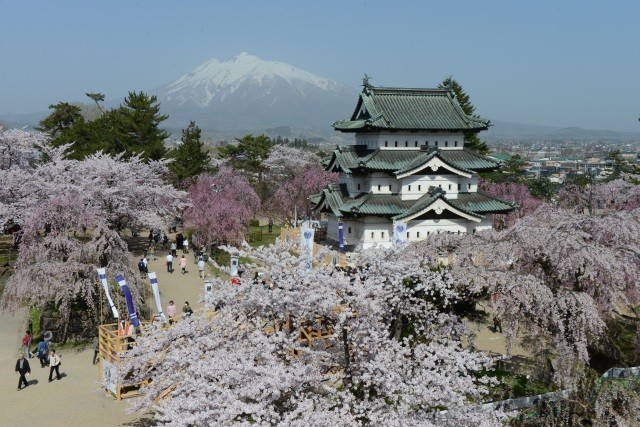
Hirosaki Castle was constructed back in 1611. The castle and the surrounding park opened as Hirosaki Park in May 1895 and has been enjoyed by many locals and visitors ever since.
The castle keep, five castle gates, and three corner turrets that have remained from the Edo period (1603-1867) are designated as National Important Cultural Properties.
Hirosaki Park is home to approximately 2,600 cherry trees of 52 varieties, making it one of the "Three Best Cherry Blossom Viewing Spots in Japan. There are many highlights, such as somei-yoshino, the oldest cherry tree in Hirosaki Park that is 140 years old, the illuminated yozakura (cherry blossoms at night), and "hanaikada," or flower rafts of cherry petals that cover the entire moat. The Hirosaki Cherry Blossom Festival, held every year from late April to early May, attracts many people from within and outside of the prefecture.
Currently, Hirosaki Castle's keep is being moved to the inner side of the castle's main citadel for repairs to the stonewalls, and for this limited time only, visitors can enjoy taking pictures of the keep and the cherry blossoms together with Mt. Iwaki.
In autumn, about 1,000 maple trees and 2,600 cherry trees turn brilliant colors, and chrysanthemum decorations and floral art adorn the site in the Hirosaki Castle Chrysanthemum and Autumn Leaves Festival. In winter, about 150 snow lanterns and snow statues handmade by citizens and about 300 miniature kamakura (Japanese igloos) lit with lights create a fantastic world in the Hirosaki Castle Snow Lantern Festival, offering beautiful seasonal scenes.
The castle keep, five castle gates, and three corner turrets that have remained from the Edo period (1603-1867) are designated as National Important Cultural Properties.
Hirosaki Park is home to approximately 2,600 cherry trees of 52 varieties, making it one of the "Three Best Cherry Blossom Viewing Spots in Japan. There are many highlights, such as somei-yoshino, the oldest cherry tree in Hirosaki Park that is 140 years old, the illuminated yozakura (cherry blossoms at night), and "hanaikada," or flower rafts of cherry petals that cover the entire moat. The Hirosaki Cherry Blossom Festival, held every year from late April to early May, attracts many people from within and outside of the prefecture.
Currently, Hirosaki Castle's keep is being moved to the inner side of the castle's main citadel for repairs to the stonewalls, and for this limited time only, visitors can enjoy taking pictures of the keep and the cherry blossoms together with Mt. Iwaki.
In autumn, about 1,000 maple trees and 2,600 cherry trees turn brilliant colors, and chrysanthemum decorations and floral art adorn the site in the Hirosaki Castle Chrysanthemum and Autumn Leaves Festival. In winter, about 150 snow lanterns and snow statues handmade by citizens and about 300 miniature kamakura (Japanese igloos) lit with lights create a fantastic world in the Hirosaki Castle Snow Lantern Festival, offering beautiful seasonal scenes.
Hirosaki Apple Park
A family-friendly park where you can experience apple picking
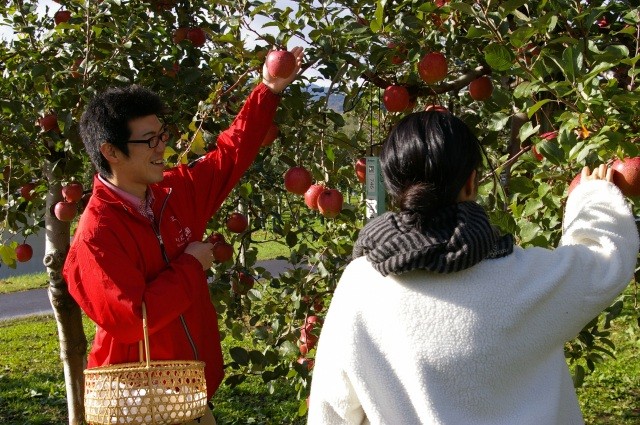
Hirosaki Apple Park covers an area of approximately 9.7 hectares, with 2,300 apple trees and around 80 varieties. This is a spot where visitors can try apple harvesting and also the opportunity to try these delicious varieties from this famous apple region in a variety of forms.
Visitors can pick apples in the park from early August to mid-November. The taste of freshly-picked apples is exceptional! The time of the year when you can experience it varies depending on the growing conditions, so please check in advance. Visitors can freely stroll along the garden paths and enjoy the beautiful view of Mt. Iwaki beyond the apple orchard.
Ringo no Ie (Apple House) sells about 1,200 apple-related products, including original local handicrafts made with apple motifs and apple sweets. At the snack corner, enjoy apple curry, apple sundaes, cider, and other apple delicacies. At the Hirosaki Cider Kobo Kimori, visitors can learn about cider brewing.
There is also a playground and a picnic area, which is popular with families.
There is also the Former Osanai Family Residence in the park, a reconstructed farmhouse where old farm equipment is on display, and the Tsugaru Folktales, where folktales are told in the Tsugaru dialect on weekends and holidays from April to November.
Visitors can pick apples in the park from early August to mid-November. The taste of freshly-picked apples is exceptional! The time of the year when you can experience it varies depending on the growing conditions, so please check in advance. Visitors can freely stroll along the garden paths and enjoy the beautiful view of Mt. Iwaki beyond the apple orchard.
Ringo no Ie (Apple House) sells about 1,200 apple-related products, including original local handicrafts made with apple motifs and apple sweets. At the snack corner, enjoy apple curry, apple sundaes, cider, and other apple delicacies. At the Hirosaki Cider Kobo Kimori, visitors can learn about cider brewing.
There is also a playground and a picnic area, which is popular with families.
There is also the Former Osanai Family Residence in the park, a reconstructed farmhouse where old farm equipment is on display, and the Tsugaru Folktales, where folktales are told in the Tsugaru dialect on weekends and holidays from April to November.
Shirakami Sanchi Visitor Center
This facility allows visitors to learn about the relationship between beech trees and the ecosystem.
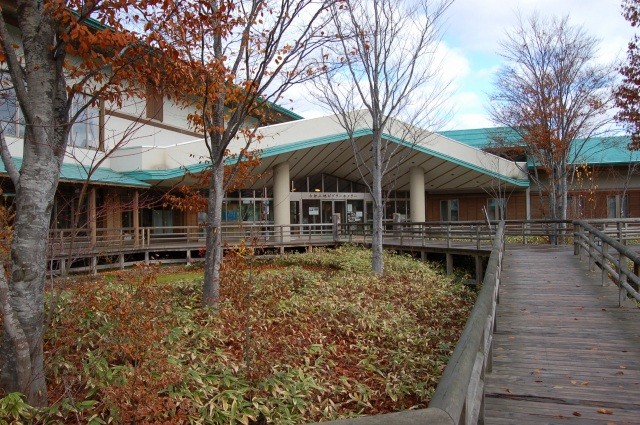
■Visual Experience HallIn the Visual Experience Hall, visitors can view the four seasons of the Shirakami Sanchi using a digital projector and a giant screen with overwhelmingly powerful and realistic sound and images. Visitors will be able to appreciate the beauty and magnificence of the beech trees in the Shirakami Sanchi area.Admission: 200 yen for adults, 100 yen for children (junior high school students and younger) *Group discounts are available for groups of 20 or more people.Running time: approx. 33 min.Screening schedule: April 1 - October 31 1st 9:00 2nd 10:00 3rd 11:00 4th 12:00 5th 13:00 6th 14:00 7th 15:00 8th 16:00 (8 screenings/day) November 1 - March 31 1st 9:30 2nd 10:30 3rd 11:30 4th 12:30 5th 13:30 6th 14:30 7th 15:30 (7 showings/day)Seats: 195
■ Exhibition HallThis is a museum where visitors can learn about the life of beech, how beech forests work, the ecosystem of the Shirakami Sanchi (mountainous region), and its relationship to human life. The nature of the Shirakami Sanchi is introduced by theme with models and panels.The tour takes about 30 minutes to 1 hour.
The Shirakami Sanchi Visitor Center also provides information on trekking courses. Please stop by as a first step to learn more about the Shirakami Sanchi.
The information may be subject to change, so please check the official website.
■ Exhibition HallThis is a museum where visitors can learn about the life of beech, how beech forests work, the ecosystem of the Shirakami Sanchi (mountainous region), and its relationship to human life. The nature of the Shirakami Sanchi is introduced by theme with models and panels.The tour takes about 30 minutes to 1 hour.
The Shirakami Sanchi Visitor Center also provides information on trekking courses. Please stop by as a first step to learn more about the Shirakami Sanchi.
The information may be subject to change, so please check the official website.
Ajigasawa (lodging)

Along the coastline of Ajigasawa, a port town facing the Sea of Japan, you will find a row of freshly dried squid like a curtain. Around the junction of Prefectural Highway No. 3 and the old highway, there are many yakiika (grilled squid) stores, which sell dried squid that has been quickly grilled, and this area is called yakiika dori (grilled squid street).
Day2
Senjojiki Coast
Feel as though you have landed on another planet! Take a walk on a vast rocky beach

Senjojiki Coast features a vast ledge that is said to be where a nobleman spread out 1,000 tatami mats and held a banquet long ago. The sight of the strangely shaped rocks called various names such as Ebisu Rock and Kabuto Rock extending out on the coastline is a highlight. It is a spectacle that will give you a wonderous feeling like that of landing on another planet. These uniquely shaped rocks form a silhouette with the evening sun in the background at sunset. It is famous as one of the best places to see the evening sun. It has even been chosen as one of the top 100 sunsets in Japan.
The coast has also been chosen as one of the 55 best bathing spots in Japan. It is a spot that is very popular for sea bathing and camping in the summer. You find shops selling grilled squid nearby. This is a unique sight like a curtain of many dried squid.
Senjojiki Coast is located just across the road from Senjojiki Station of the rapid Resort Shirakami train on the Gono Line. This is an unmanned station without a station building or even walls. There is even a train that stops here for about 15 minutes so tourists have time to take a stroll, so make sure to check the timetable! The steam whistle that sounds to signal that it is a few minutes before departure invokes the sentiment of your trip.
The coast has also been chosen as one of the 55 best bathing spots in Japan. It is a spot that is very popular for sea bathing and camping in the summer. You find shops selling grilled squid nearby. This is a unique sight like a curtain of many dried squid.
Senjojiki Coast is located just across the road from Senjojiki Station of the rapid Resort Shirakami train on the Gono Line. This is an unmanned station without a station building or even walls. There is even a train that stops here for about 15 minutes so tourists have time to take a stroll, so make sure to check the timetable! The steam whistle that sounds to signal that it is a few minutes before departure invokes the sentiment of your trip.
Koganesaki Furofushi Onsen
Release yourself from the ordinary in this gourd-shaped seaside open-air bath!

Koganesaki Furofushi Onsen is a seaside hot spring featuring an open-air bath looking out onto the sea. Indulge in an exceptionally luxurious soak in this open-air bath while enjoying the dazzling view of the glowing sunset over the sea. Day visits are available until 4pm however an overnight stay is recommended to enjoy this stunning sunset view along with the excellent local seafood served for dinner!
Besides the gourd-shaped open-air bath open for mixed bathing, a separate round open-air bath for women is available. All four baths on site are filled with hot spring water flowing directly from its source.
The name Furofushi Onsen comes from the local saying “anyone who enjoys the health benefits of this hot spring will never grow old”. The dark brown hot spring water appears bottomless due to its high iron content. The distinctive brown water is so rich in iron and salt that it will keep warming your insides for hours afterwards!
A thematic journey in the Tohoku region:Hot springs
Besides the gourd-shaped open-air bath open for mixed bathing, a separate round open-air bath for women is available. All four baths on site are filled with hot spring water flowing directly from its source.
The name Furofushi Onsen comes from the local saying “anyone who enjoys the health benefits of this hot spring will never grow old”. The dark brown hot spring water appears bottomless due to its high iron content. The distinctive brown water is so rich in iron and salt that it will keep warming your insides for hours afterwards!
A thematic journey in the Tohoku region:Hot springs
Lake Juni
A group of lakes and marshes including the mysterious Aoike

Lake Juni is the general term for a group of 33 lakes and marshes surrounded by a beech forest located in the western part of the Shirakami-Sanchi mountainous area. It is said this was formed by a landslide due to a large earthquake in 1704. You can see 12 lakes and marshes if you look from Mt. Kuzure. accordingly, these are called Lake Juni (12 lakes).
The most famous of these in particular is Aoike that glitters in vivid cobalt blue. Large rotten beech trees lie flat in the water and the water is clear to the extent that you can see the fallen trees at the bottom of the pond. Meanwhile, the blue surface of the pond is clear like the flow of ink. It is a mysterious sight. In the same way, the spring of Wakitsubo no Ike with its beautiful blue lake water has also been selected as one of the famous springs of Aomori Prefecture. After taking a stroll, take a break with a drink of tea brewed in the famous spring water of Wakitsubo no Ike in the Juniko-an teahouse.
You can enter Lake Juni from April to November. The fresh green leaf and fall leaf seasons are popular times for trekking. You can also view the Japan Canyon where the white rock surface cliffs are reflected into the surrounding trees from the Lake Juni Tour Course.
The gate continuing on to Lake Juni is closed from December to March. This means that cars cannot pass. It is not possible for individuals to take a stroll here at that time. However, you can take a stroll if you are accompanied by a guide. Please inquire if you wish to enjoy the snowy landscape.
The most famous of these in particular is Aoike that glitters in vivid cobalt blue. Large rotten beech trees lie flat in the water and the water is clear to the extent that you can see the fallen trees at the bottom of the pond. Meanwhile, the blue surface of the pond is clear like the flow of ink. It is a mysterious sight. In the same way, the spring of Wakitsubo no Ike with its beautiful blue lake water has also been selected as one of the famous springs of Aomori Prefecture. After taking a stroll, take a break with a drink of tea brewed in the famous spring water of Wakitsubo no Ike in the Juniko-an teahouse.
You can enter Lake Juni from April to November. The fresh green leaf and fall leaf seasons are popular times for trekking. You can also view the Japan Canyon where the white rock surface cliffs are reflected into the surrounding trees from the Lake Juni Tour Course.
The gate continuing on to Lake Juni is closed from December to March. This means that cars cannot pass. It is not possible for individuals to take a stroll here at that time. However, you can take a stroll if you are accompanied by a guide. Please inquire if you wish to enjoy the snowy landscape.
Shirakami River Trekking
In ancient times, waraji (Japanese traditional sandals made of rice straw) were worn to travel across remote areas deep in the mountains. Walking across clear streams with straw-covered shoes is a special experience that is worth a try.

Walking through the pristine waters that flow from the expansive beech forest in the Shirakami Sanchi, a World Natural Heritage Site, is a one-of-a-kind experience. Here, you are unlikely to encounter other people—but you may come across birds, fish, wild animals, and the remains of a forest railroad from long ago. You will be accompanied by a guide, so there is nothing to fear even if you are a first-time river walker. After meeting up at the Shirakami-Sanchi World Heritage Conservation Center (Fujisato-kan), we will move to the location in a vehicle. The river is crystal-clear and transparent to the bottom. You can swim in it if it is warm out. We will have lunch (included in the tour price) on the banks of the river. Enjoy a full day surrounded by untouched nature with your entire body.Please bring shoes for river walking (or sneakers that you do not mind getting completely wet. Sneakers will be wrapped in straw so that you do not slip on the slippery river bottom while walking) and a change of clothes. This activity is available in summer.
Namahage Museum
The collection of 150 hand-carved Namahage masks is a must see! Enjoy dressing up in a real Namahage costume!
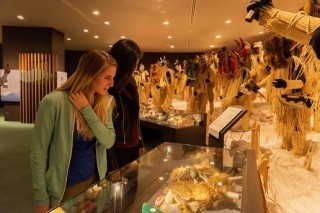
Namahage is a traditional folk event on the Oga Peninsula. Namahage wears an ogre mask and cries out, "Are there any crying children?" and is mistaken for a bad guy who makes children cry.In truth, however, he is a god who comes every New Year's Eve to warn people against laziness and to bring good health, good harvest in the fields, good harvest in the mountains, and good harvest in the sea.
The Namahage Museum introduces the history and culture of Namahage. The Namahage display corner features 150 diverse masks that were actually used in each village. In the Lore Hall, the movie "One Night of Namahage," which introduces the Namahage culture on New Year's Eve, is shown.
There is a corner where visitors can dress up in Namahage costumes and have their picture taken, and a souvenir corner where Namahage goods can be purchased. If you are lucky, you can watch a Namahage carver demonstrate hand-carving masks. (This event is held irregularly).
Next to the Namahage Museum is the Oga Mayama Folklore Museum, where Namahage demonstrations can be seen. Visit both and enjoy the Namahage, which has been registered as a UNESCO Intangible Cultural Heritage.
The Namahage Museum introduces the history and culture of Namahage. The Namahage display corner features 150 diverse masks that were actually used in each village. In the Lore Hall, the movie "One Night of Namahage," which introduces the Namahage culture on New Year's Eve, is shown.
There is a corner where visitors can dress up in Namahage costumes and have their picture taken, and a souvenir corner where Namahage goods can be purchased. If you are lucky, you can watch a Namahage carver demonstrate hand-carving masks. (This event is held irregularly).
Next to the Namahage Museum is the Oga Mayama Folklore Museum, where Namahage demonstrations can be seen. Visit both and enjoy the Namahage, which has been registered as a UNESCO Intangible Cultural Heritage.
Gofu Namahage Taiko Live (Oga City, Akita Prefecture)
Day3
Akita City Folk Performing Arts Heritage Center (Neburi Nagashi Kan)
Experience a Kanto lantern the same size as the real thing!
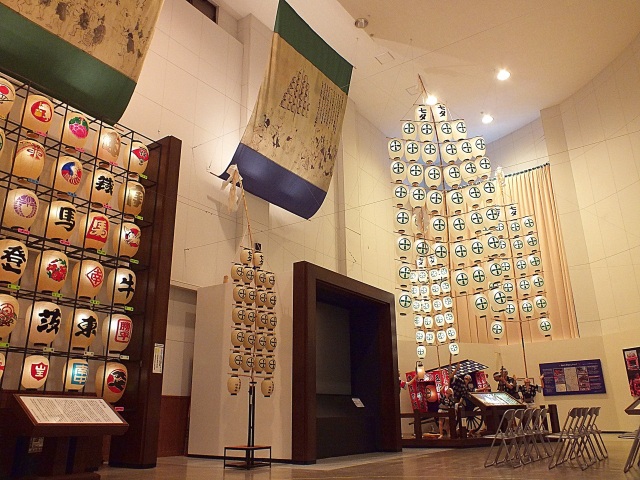
This facility introduces Akita City's traditional events and folk performing arts, such as Kanto and Akita Manzai, with materials and videos. The life-size Kanto lanterns lined up in the atrium exhibition hall are a spectacular sight.Visitors can actually hold the lanterns in their hands and experience the performance.
Inaniwa Udon Noodles

Inaniwa-cho in the city of Yuzawa in Akita prefecture is the hometown of Inaniwa Udon noodles. The smooth, chewy noodles are hand-made using the traditional processes of kneading, pounding and stretching. Praised nationally as one of Japan’s three best noodles, Inaniwa Udon was used as a traditional offering to landlords and as gifts between feudal lords travelling to and from Edo (Tokyo) during the Edo period. In addition to the city of Yuzawa, there are a number of restaurants throughout Akita offering popular Inaniwa Udon.
Nishikawa Town, Yamagata Prefecture, Dewa Sanzan (Three Mountains of Dewa), three mouths to climb and a tour of the roads

There are three entrances to the Dewa Sanzan from Nishikawa Town. Each entrance has a shrine: Iwanezawa-muchi - Iwanezawa Sanzan Shrine, Hondoji-muchi - Hondoji-muchi Nomiya Yudenyama Shrine, and Ooisawa-muchi - Ooisawa Yudenyama Shrine. There is also the Rokujurikoshi Kaido, a road that leads to these shrines. Guided tours of these three shrines and highways will be conducted by guides. By touring the three shrines, rather than each shrine alone, visitors will be able to enjoy the blessings of the shrines and double the pleasure of historical exploration.
Risshaku-ji Temple
The historic temple rising to the sky along delightful mountain paths described in the great Haiku master’s poem

Risshaku-ji Temple is popularly known as Yamadera (Mountain Temple). The rocky mountain itself is a sacred location for ascetic Zen practices. Visitors can enjoy breath-taking views along the one-hour path from the foot of the mountain to Okunoin Temple and Daibutsuden Hall at the top. The great Haiku master Basho Matsuo composed one of his best-known Haiku poems “Shizukesa ya/iwa ni shimiiru/semi no koe” in the work “Oku no Hosomichi” (Narrow Road to the Deep North) while walking this path.
The series of 1,015 stone steps to Okunoin Temple is said to steadily release visitors from their worldly desires as they ascend. The many historic sites and scenic locations along the way encourage visitors to continue the climb while enriching the mind and senses.
The path begins with Konpo Chudo Hall, the oldest cedar wood building in Japan and a designated Important Cultural Property. Midahora Rock is a lucky location that is said to bring happiness if visitors can find the figure of Buddha on the side of the rock eroded by wind and rain over thousands of years. Passing through the Niomon Gate with a pair of fierce guardian god statues brings you to the majestic Kaizando and Nokyodo Halls. The red Nokyodo Hall sitting on a craggy mountain outcrop is an iconic view of the Yamadera. The steps on from Kaizando Hall take visitors to Godaido Hall which is evocative of a traditional Noh stage offering a panoramic view of the surrounding mountains. The final destinations are Okunoin Temple and Daibutsuden Hall, which is said to expel evil spirits.
After exploring the mountain temples be sure to enjoy the variety of local specialties available at the nearby shops including Yamadera Chikara Konjac, cherry ice cream and Dashi Soba noodles!
The series of 1,015 stone steps to Okunoin Temple is said to steadily release visitors from their worldly desires as they ascend. The many historic sites and scenic locations along the way encourage visitors to continue the climb while enriching the mind and senses.
The path begins with Konpo Chudo Hall, the oldest cedar wood building in Japan and a designated Important Cultural Property. Midahora Rock is a lucky location that is said to bring happiness if visitors can find the figure of Buddha on the side of the rock eroded by wind and rain over thousands of years. Passing through the Niomon Gate with a pair of fierce guardian god statues brings you to the majestic Kaizando and Nokyodo Halls. The red Nokyodo Hall sitting on a craggy mountain outcrop is an iconic view of the Yamadera. The steps on from Kaizando Hall take visitors to Godaido Hall which is evocative of a traditional Noh stage offering a panoramic view of the surrounding mountains. The final destinations are Okunoin Temple and Daibutsuden Hall, which is said to expel evil spirits.
After exploring the mountain temples be sure to enjoy the variety of local specialties available at the nearby shops including Yamadera Chikara Konjac, cherry ice cream and Dashi Soba noodles!
Yamagata Station/Yamagata Airport
GOAL
